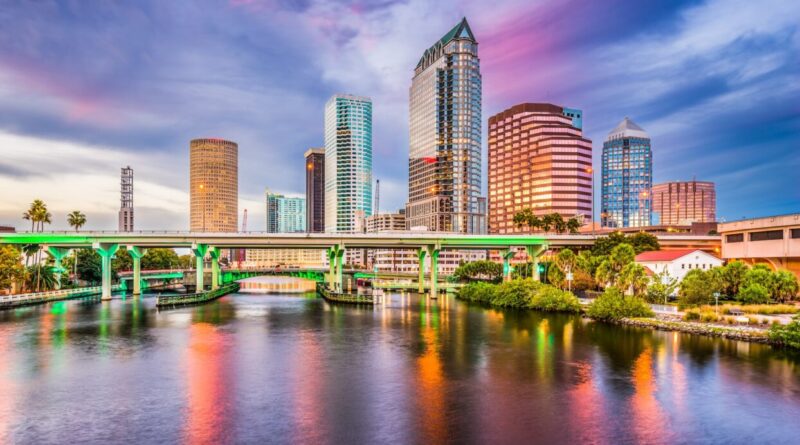History of Tampa Florida
Tampa, Florida, is a city with a vibrant history that reflects the broader story of Florida itself—a tale of indigenous cultures, European exploration, immigrant influences, and rapid growth. Located on the west coast of Florida along Tampa Bay, the city has evolved from a small settlement into a bustling metropolitan area known for its cultural diversity, economic significance, and scenic beauty. The history of Tampa is a fascinating journey through time, marked by key events and developments that have shaped it into the city we know today.
Indigenous Peoples and Early Exploration
Long before European explorers set foot in what is now Tampa, the area was home to indigenous peoples, notably the Tocobaga tribe. The Tocobaga lived in villages around Tampa Bay, with their primary settlement believed to be near present-day Safety Harbor. They built large temple mounds, fished in the bay, and traded with other native groups. The arrival of European explorers in the 16th century marked the beginning of significant changes for these indigenous communities.
In 1528, the Spanish explorer Pánfilo de Narváez arrived in the Tampa Bay area, followed by Hernando de Soto in 1539. These early expeditions were fraught with challenges, including conflicts with the indigenous populations and the harsh Florida environment. The Spanish were searching for gold and other riches, but their interactions with the native peoples often led to violence and the spread of diseases, which devastated the indigenous population. Despite these early encounters, Tampa would remain largely undeveloped by Europeans for several more centuries.
The Establishment of Fort Brooke
The next significant chapter in Tampa’s history began in 1824 with the establishment of Fort Brooke by the U.S. Army. Named after Colonel George Mercer Brooke, the fort was strategically located at the mouth of the Hillsborough River, where it empties into Tampa Bay. Fort Brooke served as a military outpost during the Seminole Wars, a series of conflicts between the United States and the Seminole people, who resisted efforts to remove them from Florida.
The presence of Fort Brooke helped attract settlers to the area, and a small community began to grow around the fort. By the mid-19th century, Tampa was a modest settlement with a few hundred residents. The town was officially incorporated in 1849, marking the beginning of Tampa’s transition from a military outpost to a civilian community.
The Impact of the Civil War and Reconstruction
Tampa’s growth was interrupted by the Civil War, during which the town’s strategic location made it a target for Union forces. In 1862, Union gunboats sailed up the Hillsborough River and bombarded Fort Brooke, eventually leading to the occupation of Tampa by Union troops. The war and subsequent Reconstruction period were challenging times for Tampa, with the local economy struggling and the population dwindling.
However, the end of the Civil War also brought new opportunities for development. The arrival of the railroad in the 1880s was a turning point for Tampa, connecting the city to the rest of Florida and the southeastern United States. This transportation link was crucial for the growth of Tampa’s economy, particularly in industries such as shipping, agriculture, and manufacturing.
The Cuban Connection and the Cigar Industry
One of the most significant influences on Tampa’s history and culture was the influx of Cuban immigrants in the late 19th and early 20th centuries. In 1886, Vicente Martinez-Ybor, a Cuban cigar manufacturer, relocated his operations from Key West to Tampa, establishing the town of Ybor City just northeast of downtown Tampa. Ybor City quickly became the center of the cigar industry in the United States, attracting thousands of Cuban, Spanish, and Italian immigrants who came to work in the cigar factories.
The cigar industry transformed Tampa from a small town into a thriving industrial city. By the early 20th century, Tampa was known as the “Cigar Capital of the World,” producing millions of cigars annually. The vibrant immigrant communities that settled in Ybor City contributed to Tampa’s rich cultural diversity, with their traditions, languages, and cuisines leaving a lasting impact on the city’s identity.
The Growth of Tampa in the 20th Century
The 20th century was a period of significant growth and development for Tampa. The city’s population expanded rapidly, and new industries emerged alongside the established cigar industry. The construction of the Gandy Bridge in 1924, connecting Tampa to St. Petersburg, facilitated regional growth and spurred economic development.
Tampa also became a key military hub during World War II, with MacDill Air Force Base playing a central role in the war effort. The post-war period saw a construction boom in Tampa, with new residential neighborhoods, shopping centers, and infrastructure projects reshaping the city. The University of South Florida, established in 1956, further contributed to Tampa’s growth, attracting students and faculty from across the country.
The latter half of the 20th century also saw Tampa becoming a major center for tourism, thanks to its warm climate, beautiful beaches, and attractions like Busch Gardens, which opened in 1959. The city’s downtown area underwent significant revitalization efforts, leading to the development of the Riverwalk, the Tampa Convention Center, and the expansion of the Port of Tampa.
Tampa Today: A Modern, Diverse City
Today, Tampa is a thriving metropolitan area with a diverse population and a dynamic economy. The city is known for its strong financial and healthcare sectors, vibrant arts and cultural scene, and a growing tech industry. The downtown area has continued to evolve, with new developments, parks, and entertainment venues drawing residents and visitors alike.
Tampa’s history is celebrated in its many museums, historic districts, and cultural festivals. Ybor City remains a vital part of Tampa’s identity, with its historic buildings, cigar shops, and Latin cafes serving as a reminder of the city’s rich immigrant heritage. The annual Gasparilla Pirate Festival, which dates back to 1904, is another example of Tampa’s unique blend of history and culture, drawing thousands of visitors to the city each year.
As Tampa continues to grow and evolve, it remains a city that honors its past while looking toward the future. Its history is a testament to the resilience and diversity of its people, and it continues to be a place where different cultures, industries, and ideas come together to create something truly special.
Discover more from City Towner
Subscribe to get the latest posts sent to your email.




